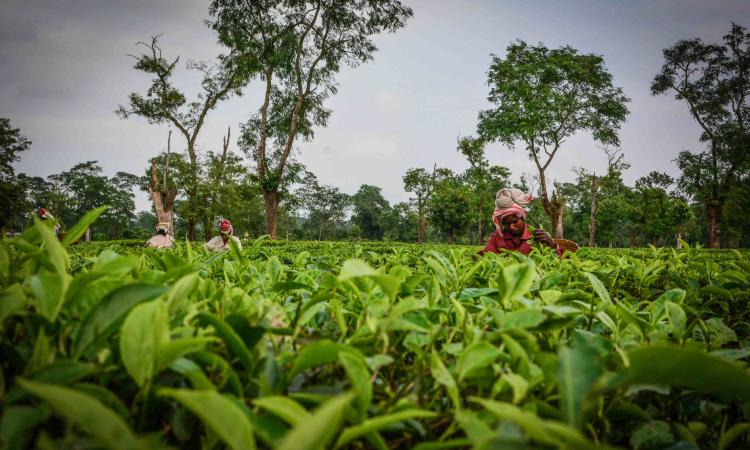
Assam, which lies on either side of the Brahmaputra River and borders Bangladesh and Myanmar, is the world's largest tea-growing region (Wikipedia). According to estimates by the Tea Board of India in 2007, the state has 3.11 lakh hectares of area under tea cultivation--more than 52% of India's total tea area. About 51% of the tea produced in India and about 1/6th of the world's total tea production is from Assam but this morning brew may be losing much of its charm, thanks to erratic climate patterns.
The impact of climate change
On average, Assam has lost about 22.1 cm of rainfall annually in the last 100 years, and extreme climatic events are on the rise. “Climate change is a cause, not an effect”, says Dr. R M Bhagat, scientist at Tocklai Tea Research Institute (TRI) in Jorhat, Assam. Studies done at the TRI reveal that the total rainfall in the state is increasing but has a trend of shifting more towards the monsoon months. “Some tea gardens in Dibrugarh district have floodwater standing upto the plucking height of the bush for about 10-15 days during the monsoons. This was not the case earlier. As a result, a few tea gardens have been abandoned”, asserts Dr. Uttam Baruah, retired scientist, TRI who now trains small tea growers to properly grow their crop.
There is also the uncertainty of the early flash of rainfall during winter and early spring. That is the time you use the fertilizers on the tea crop, which is now of no use to the plant. “This lack of rain has resulted in more use of chemicals like urea and potash in small tea gardens in our village. Therefore, earthworms no longer survive and the yield also reduces. The soil, too, has become dry owing to less rainfall. About 20% of tea bushes here have died this year”, remarks Lalit Saikia, a small tea grower from Meleng-Lokhipur village in Jorhat.
Cost of cultivation has increased
The tea crop goes through two types of stresses in its life cycle--biotic and abiotic. Events such as droughts and floods make up abiotic stress, which in turn results in creating biotic stress for the crop in the form of increased pest attacks. Due to erratic climate patterns, the stresses have become more pronounced and profuse on the crop. More biotic stress compels cultivators to use more pesticides and fertilizers while increased abiotic stress demands for more irrigation, though tea is traditionally a rain-fed crop. This only increases the associated costs.
Typically, tea growers would spend about Rs. 4000-5000 per hectare on pesticides, but now it has gone up to Rs. 20000-25000 a hectare in some plantations according to Dr. Muralidharan, Director at Tocklai Tea Research Institute. Increase in cost of production has far reaching impacts especially on small tea plantations that make up about 30% of India’s tea production hence hampering its economic viability. It also affects livelihoods as the tea industry provides an average daily employment to more than 6 lakh people.
Yields have declines and soil has degrades thanks to the impacts of climate change. Pest attacks have also been on the rise and a few new types of pests such as the ‘white fly’ have also been found to attack the crop. However, tea is adapting as are tea growers.
The crop is adapting
The temperature required for tea cultivation is between 13 and 30 degrees Celcius but it has been observed that with the temperatures soaring to even above 35 degrees, the tea crop has managed to sustain itself. Many are resorting to organic cultivation, and that is seen to be performing better. “Around 8 out of 22 small tea gardens in our village have shifted to organic, but the results will be visible only next year”, Saikia says. Dr. Rajiv Lochan Deka of the Department of Agrometerology, Assam Agricultural University suggests better soil management, improving crop and aerial environment, selecting the most suitable land for new or replanting, and using drought and heat tolerant cultivars are some measures that could help the crop adapt better.
It appears that the fate of tea--the most popular manufactured drink consumed in the world--is as uncertain as the growing impacts of climate change.
(The article was compiled from inputs gathered at the Media Workshop on 'Adaptation to climate change in the Brahmaputra Basin' organised by Centre for Environment Education (CEE), The Third Pole under the Indian Himalayas Climate Adaptation Programme (IHCAP) of the Swiss Development and Cooperation in Jorhat, Assam.)